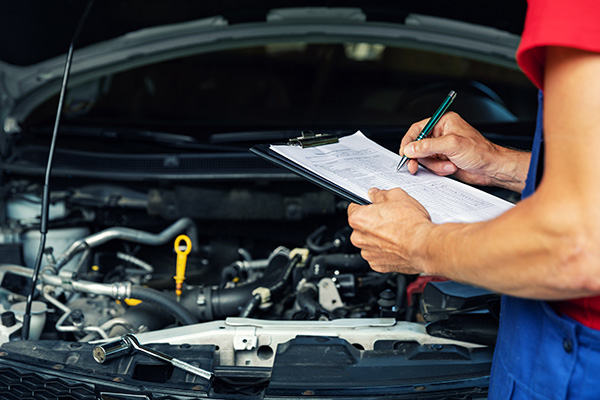
Planning a long drive can be exhilarating. The open road, the scenic views, and the promise of adventure make it all worthwhile. However, ensuring your vehicle is in top-notch condition is crucial to prevent any unexpected hiccups along the way. A thorough safety inspection before hitting the road can make the difference between a nice and troublesome journey. Here's a comprehensive guide to help you perform an effective safety inspection before your next long drive.
1. Check the Tires Thoroughly
Your tires are the only part of your vehicle that touches the road, making their condition critical for safety. Start by checking the tire pressure; under-inflated or over-inflated tires can affect handling and fuel efficiency and increase the risk of blowouts. Use a reliable tire gauge to ensure all tires, including the spare, are inflated to the manufacturer's recommended levels.
Next, inspect the tread depth. Worn-out treads can reduce traction, especially in wet conditions, increasing the likelihood of skidding. A simple way to check tread depth is by using the penny test: insert a penny into the tread with Lincoln's head upside down. If you can see the top of his head, it's time to replace the tire. Additionally, look for any cuts, punctures, or bulges, and ensure the tires are free from embedded objects.
2. Inspect All Fluid Levels
Fluids are the lifeblood of your vehicle, ensuring everything runs smoothly. Start by checking the engine oil level. Low or dirty oil can lead to engine damage, so top it off or change it if necessary. Check the transmission fluid, brake fluid, power steering fluid, and windshield washer fluid levels. Each fluid plays a crucial role:
- Transmission fluid ensures smooth gear changes.
- Brake fluid allows efficient braking.
- Power steering fluid assists in steering.
- Washer fluid helps maintain clear visibility.
Coolant is another essential fluid to check. A proper coolant level ensures your engine doesn't overheat during the drive. If the coolant level is low, top it up. Inspect the radiator and hoses for any leaks or damage.
3. Test the Brakes
Your brakes are one of the most critical safety components of your vehicle. Before embarking on a long drive, ensure they are functioning properly. Start by listening for any unusual sounds when you press the brake pedal. Squealing, grinding, or clicking noises can indicate worn-out brake pads or issues with the brake system.
Check the brake fluid level and top it off if necessary. If you notice a soft or spongy brake pedal, it could indicate air in the brake lines or a fluid leak, both of which require immediate attention. Lastly, take your vehicle for a short test drive and perform a few brake tests to ensure they respond effectively and evenly.
4. Ensure All Lights and Signals are Working
Properly functioning lights and signals are vital for safe driving, especially during night-time or in poor weather conditions. Start by inspecting the headlights, brake lights, turn signals, hazard lights, and reverse lights. Have a friend help you check the lights while you activate each one from inside the vehicle.
Replace any burnt-out bulbs and clean the lenses to ensure maximum brightness. Don't forget to check the interior lights and dashboard indicators as well. Proper lighting not only helps you see the road but also ensures other drivers can see you.
5. Examine the Battery
A dead battery can quickly turn your road trip into a frustrating ordeal. Before you set off:
Check the battery's condition.
Look for any signs of corrosion on the terminals and clean them if necessary.
Ensure the battery is securely mounted and that the connections are tight.
If your battery is over three years old, consider having it tested to check its charge and overall health. Most auto parts stores offer free battery testing services. If the battery is weak, it's wise to replace it before your journey to avoid any unexpected breakdowns.
6. Assess the Windshield and Wipers
Clear visibility is crucial for safe driving. Start by inspecting your windshield for any cracks or chips that could obstruct your view or worsen over time. Small chips can often be repaired, but larger cracks may require a windshield replacement.
Next, check the condition of your windshield wipers. Worn-out wipers can leave streaks and reduce visibility, especially during rain. Replace the wiper blades if they show signs of wear, and ensure the washer fluid reservoir is filled. Good wipers and a clean windshield can significantly enhance your driving safety.
7. Verify Emergency Equipment
No one likes to think about emergencies, but being prepared is key to handling them effectively. Ensure your vehicle is equipped with essential emergency items such as a spare tire, jack, and lug wrench. Verify that the spare tire is in good condition and properly inflated.
Pack an emergency kit that includes items like jumper cables, a first-aid kit, a flashlight with extra batteries, basic tools, reflective triangles, and a fire extinguisher. Having these items on hand can help you deal with minor issues and stay safe while waiting for roadside assistance if needed.
Make sure your vehicle is in perfect condition before your next road trip – schedule a comprehensive safety inspection with Community Auto today!